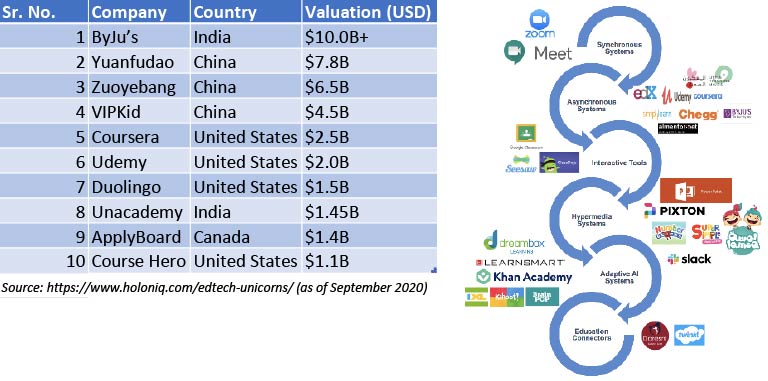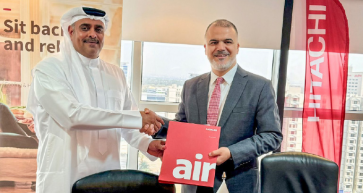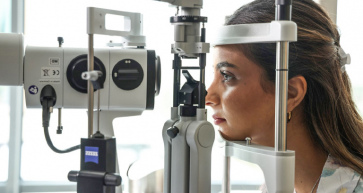
Financial Expert Pria Masson Tanwar talks about the concept of Edutech
Through this pandemic, if I had to choose the one thing that allowed us all to maintain some semblance of a new normal, I would choose technology. The ubiquitous nature has ensured that we experience it in every aspect of our daily lives. Just how much, becomes rapidly evident when you watch a 6-year-old attend a google meet and navigate school software, to click on links and watch their familiar teachers teach them. So, this month, I thought of sharing my understanding of this large ecosystem called Education Technology or ‘EduTech’.
Education is a fantastic business because of the vast audience that can be reached in so many ways. Technology has allowed learning to almost be re-invented. The aim of EduTech is to either provide ways to engage without a physical presence or to provide efficiency so that educators and learners engage better in a face-to-face environment.
At a broad level, Edutech covers all forms of technology that aid education – the hardware like computers, tablets etc., the software and everything in between. It is this ‘in-between’ layer that is seeing a rise in interest and creates opportunities for educators, learners, and entrepreneurs alike. This layer covers synchronous and asynchronous learning, interactive technology, hypermedia, Artificial Intelligence (AI) based adaptive learning and even simple connection tools.
Synchronous learning is a form of technology we are probably most familiar with. It takes the form of distance education through real-time interaction. The subset of this are the video conferencing tools like Zoom, Google Meet etc. Several companies are working on tools to aid online synchronous teaching as against office-based conference tools.
Asynchonous learning is video based systems that provide course materials and a platform to engage (usually offline) with the teacher. These come under the broad area of Massive Open Online Course (MOOC). Popular global platforms include Edx, Udemy, Coursera and regional players such as Almentor, and Little Thinking Minds have joined the bandwagon.
Combination learning systems that merge synchronous and asynchronous systems include tutoring platforms like Byjus, Simplilearn or Chegg.
Interactive Edutech takes the form of classroom and teacher assistance tools such as Google Classroom, Seesaw, Class Dojo, etc. These allow teachers and students to interact and learn in a closed group environment, to assess deliverables and provide feedback.
Hypermedia Based EduTech is expansive. This refers to systems that use animations, songs etc. to engage the learner and make the learning process more play based. These are used by learners to demonstrate their learning or just to expand their interest. The most familiar of these is probably PowerPoint presentations. However the evolution of this form of hypermedia has been extensive and, today, sites like Pixton allow for the creation of comics and systems like Slack help with collaborative projects. Hypermedia is also a very effective tool for younger children who can, via global sites like Alphablocks/NumberBlocks, Supersimple songs or the regional Lamsa, learn without realising they are learning.
 Connection Based Systems provide a platform to aggregate resources. This could be an aggregation of tutors with students like Darseni in Bahrain, or websites like Twinkl which aggregate learning resources.
Connection Based Systems provide a platform to aggregate resources. This could be an aggregation of tutors with students like Darseni in Bahrain, or websites like Twinkl which aggregate learning resources.
Adaptive AI Based EduTech is the most complex of these systems. These are intuitive systems that adapt that the adjust the learning process based on how the learner is learning. Several adaptive based learning systems now exist such as Khan Academy, McGraw Hill LearnSmart, Dreambox. There are also specific game based adaptive learning platforms such as Kahoot , Brainpop or IXL.
Irrespective of the nature, most of the EduTech systems are subscription-based services. Some of them will provide a partial service free, but there will be other services that require a payment. Completely free platforms are likely to be innovative as to how they earn – this usually means targeted advertising in some form.
 Technology systems are expensive. Anything that stores your data requires encryption systems, servers, cloud space etc. - all of which costs a lot of money. Add to that the entire team that ensures the safety of data and does all the back-end programing, algorithm writing etc. However, there is still a lot of money that can be made – as is evident from the valuation of some EduTech businesses.
Technology systems are expensive. Anything that stores your data requires encryption systems, servers, cloud space etc. - all of which costs a lot of money. Add to that the entire team that ensures the safety of data and does all the back-end programing, algorithm writing etc. However, there is still a lot of money that can be made – as is evident from the valuation of some EduTech businesses.
Education is expected to be for a greater good, and undoubtedly the standards and expectations are higher than for other industries. However, the baseline principles are the same - to make at least enough money to cover costs. Just like there are no free lunches, there are no free services either - no matter how altruistic the industry is deemed to be.
Pria is a strategy consultant and advisor. You can follow Pria using her Instagram handle
@businessclues33 or read more of her articles at www.business-clues.com



